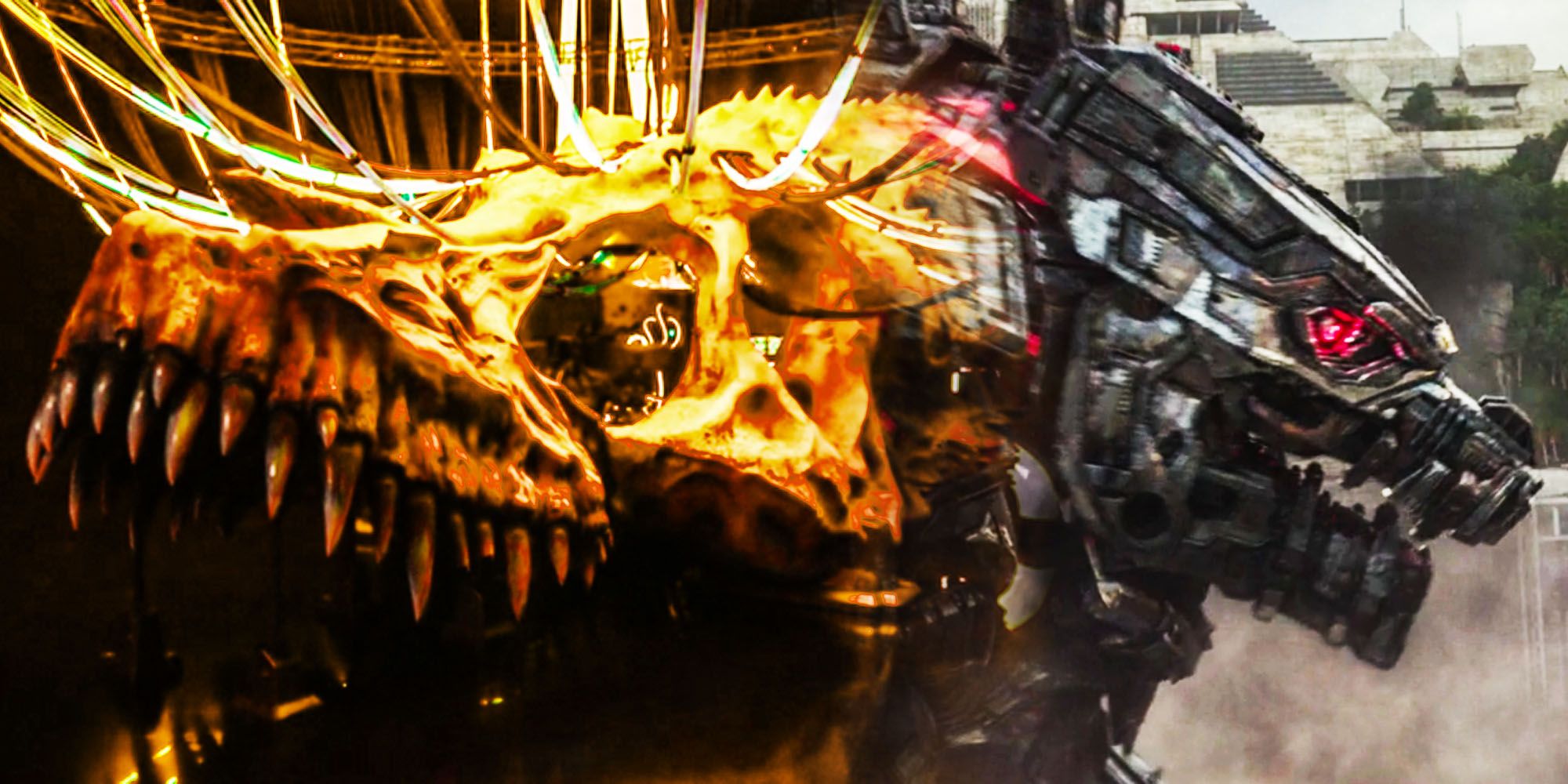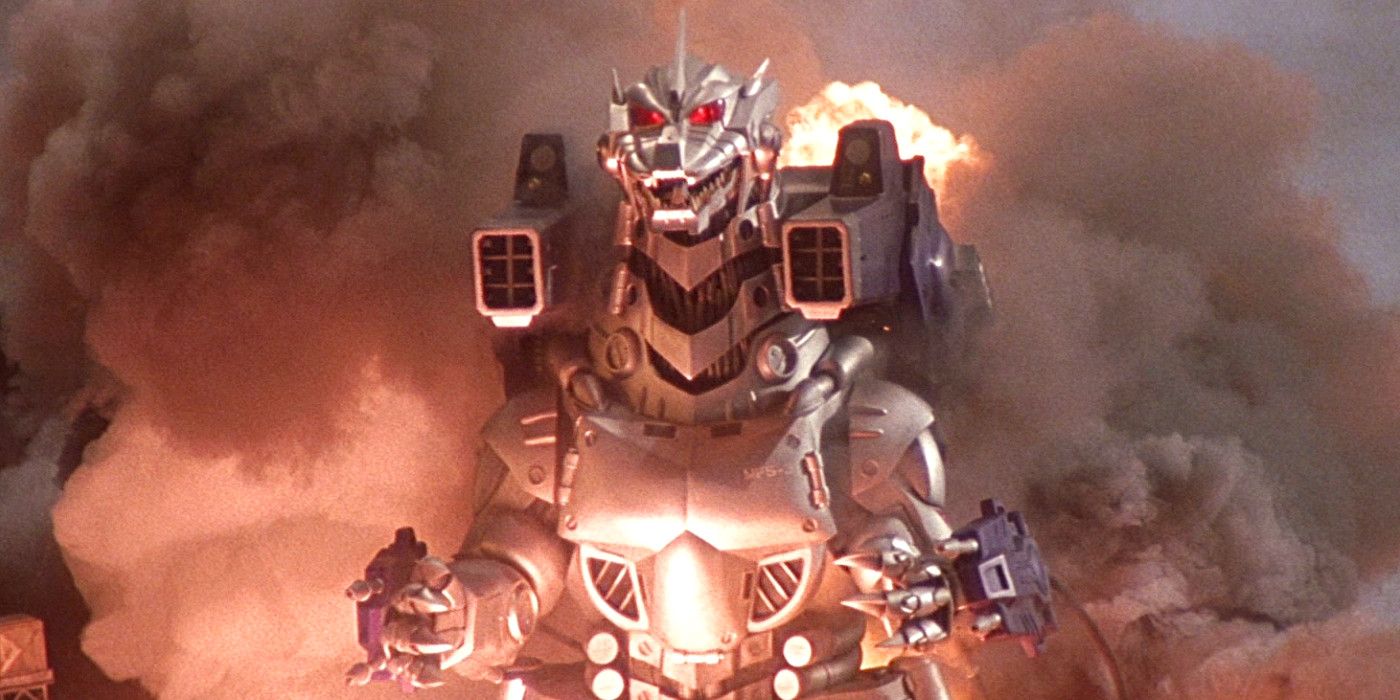Warning: Spoilers ahead for Godzilla vs. Kong, and Mechagodzilla's genesis.
Godzilla vs. Kong's twist of Mechagodzilla having been created in part from King Ghidorah's skull isn't a new one, and in fact, a previous Mechagodzilla was also made from another monster's bones. Godzilla vs. Kong is the culmination of Legendary's three previous MonsterVerse movies, bringing their two headlining Titans together in an epic throw down for the King of the Monsters title. In the end, though, Godzilla and Kong must team up to defeat an even bigger threat - Mechagodzilla.
Created by Apex Cybernetics, Mechagodzilla is intended to be humanity's weapon against the Titans. However, to control the robot, Apex uses the remains of another Titan - King Ghidorah. While alive, Ghidorah's three heads communicated telepathically, and the monster's skulls retain some of that ability. By using Ghidorah's skull and neural networks as the basis for a massive computer, Apex is able to create a psychic link between a remote pilot and Mechagodzilla, allowing the giant robot to be controlled without a human on board. Of course, this design has a fatal flaw in that once Mechagodzilla is fully-powered by the Hollow Earth energy, Ghidorah's consciousness reawakens, electrocutes the pilot, and takes control of the robot itself. In Godzilla vs. Kong, having Mechagodzilla come under the control of King Ghidorah is the film's third act twist, but there is a precedent found in an earlier Godzilla movie.
Toho's Godzilla Against Mechagodzilla is a 2002 movie that sees Mechagodzilla return for its third appearance in the long-running series. This film, however, only recognizes the first Godzilla from 1954 as canon. It's set in a Japan where in response to frequent monster attacks, the military creates a robot for protection - Mechagodzilla or, as it's more affectionately known, Kiryu. This version of the robot is built upon the bones and uses the DNA of the original Godzilla, with the intention being these organic computers would control the robot's subconscious motor functions, freeing up the pilot for more important tasks. This, too, proves to be a terrible flaw of design, because when another Godzilla attacks and Kiryu is sent to fight it, this Godzilla's roar awakens the memories of the first Godzilla's death hidden within Kiryu's borrowed DNA. Reliving the experience sends Kiryu on a rampage and its pilot is unable to regain control, forced to wait for it to simply run out of fuel. While not exactly the same as Ghidorah assuming control of Mechagodzilla, Kiryu being affected by Godzilla's memories sets a precedent for what eventually goes down in Godzilla vs. Kong's third act.
In both movies, humanity tries to harness the power of the kaiju or Titans for themselves, and in both cases, they pay a terrible price. In Godzilla vs. Kong that price is the return of King Ghidorah, while in Godzilla Against Mechagodzilla it's an attack even worse than that of the original Godzilla. Each of these Mechagodzillas is created with the intention of protecting humanity, yet each winds up destroying cities and killing countless people. While different in their creation, both Mechagodzilla versions highlight how humans are just as capable of causing destruction as the monsters they fear.
Godzilla vs. Kong's Mechagodzilla is ended soon after it emerges, defeated by Kong with an assist from Godzilla, but Kiryu hangs on for the remainder of Godzilla Against Mechagodzilla and its sequel, Godzilla: Tokyo S.O.S. Godzilla and Kiryu's final fight in the first film ends in a draw, but in the sequel it's Kiryu - again affected by the original Godzilla's memories and no longer under the control of its pilot - who carries a heavily injured Godzilla out to sea where they both sink beneath the waves, presumably to their deaths. Again, like their differences in creation, the end for the MonsterVerse's Mechagodzilla and Kiryu aren't exactly the same, but in neither case are they destroyed by the humans who created them after realizing their folly. Instead, it's the monsters themselves, be it Kong and Godzilla or a self-aware Kiryu, who recognize that Mechagodzilla is an abomination against nature and should be destroyed.
Godzilla Against Mechagodzilla and Godzilla vs. Kong aren't overly concerned with deep, thought-provoking messages, but with each version of Mechagodzilla, humanity is called out for attempting to control something they don't fully understand. The means by which the films communicate these ideas are admittedly silly, but both achieve the same result: After humans attempt to bend the natural order to their will, nature finds a way to return balance.


